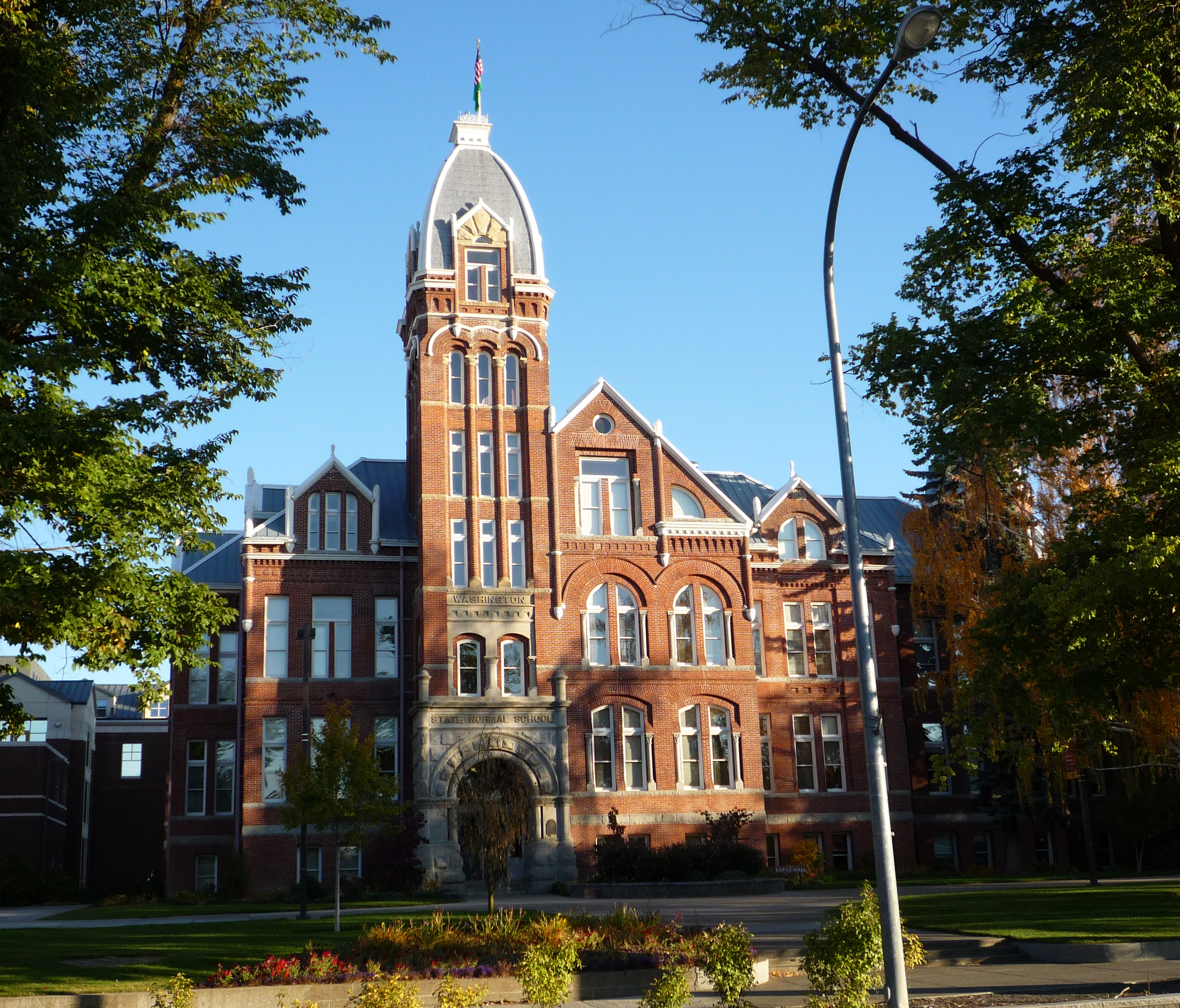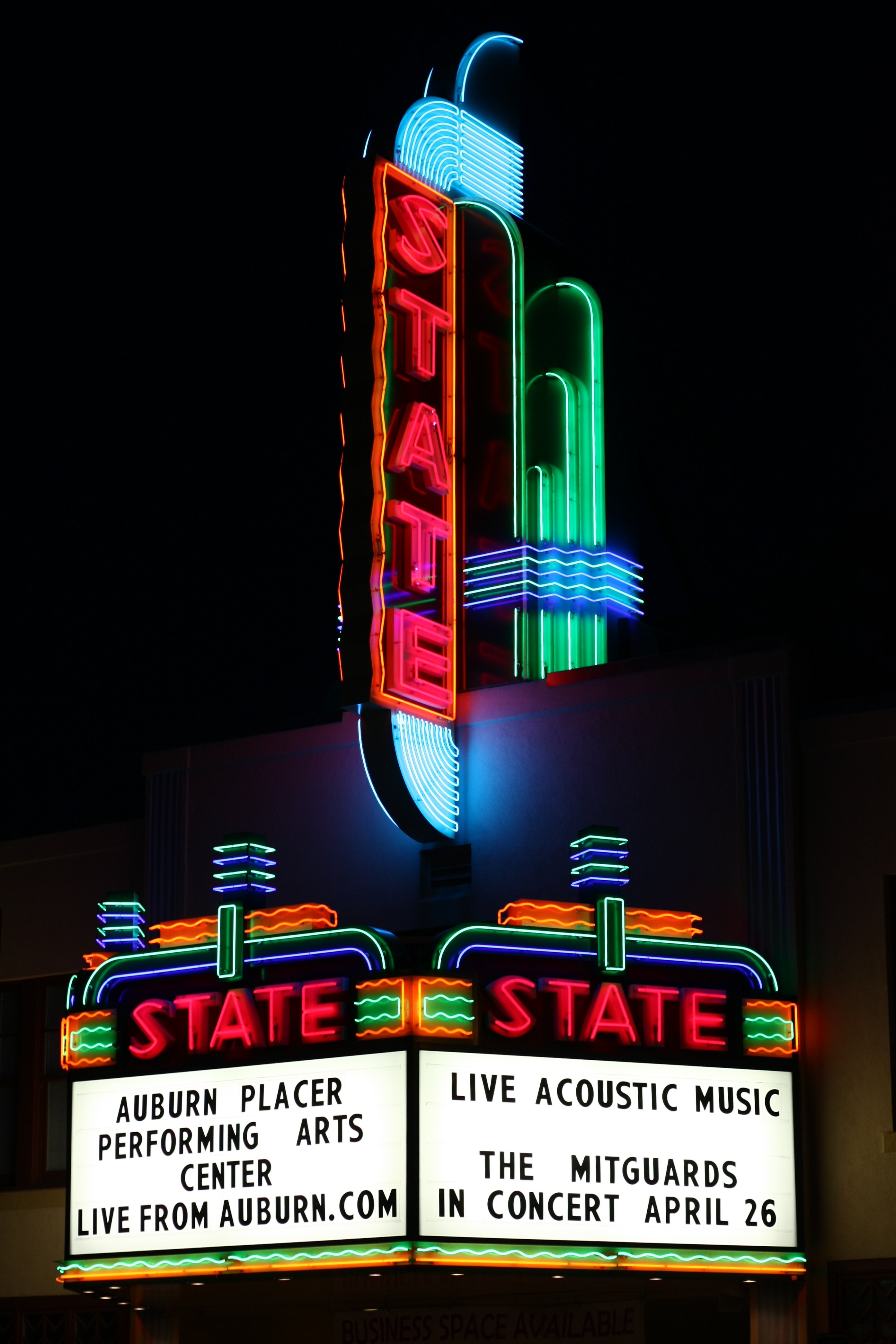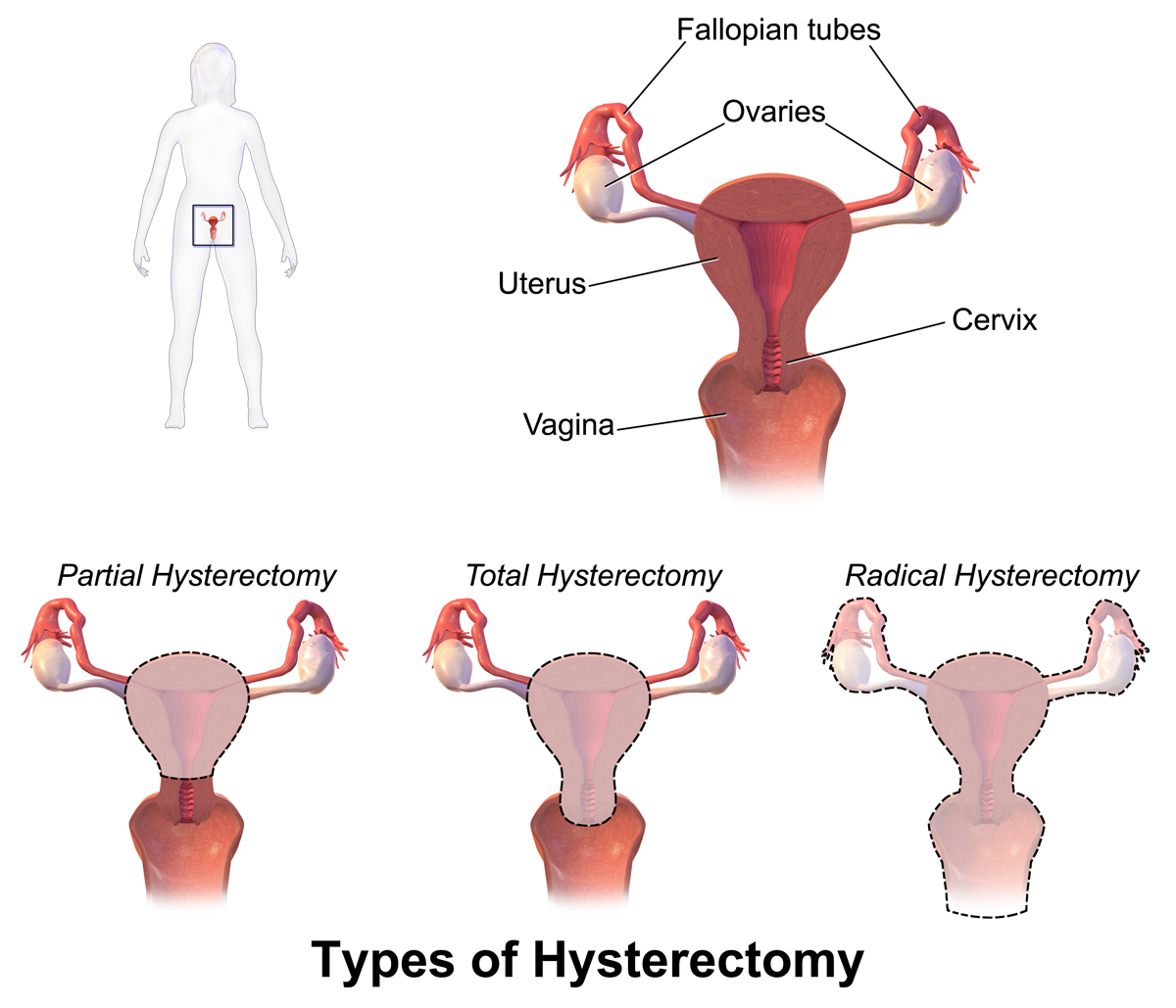|
Dick And Jane's Spot
''Dick and Jane's Spot'' is a yard art project in Ellensburg, Washington. Created and occupied by Jane Orleman and Richard C. Elliott, the exterior of the house features artworks created by Orleman, Elliott, and over 40 other artists from the American Northwest. As the personal residence of the artists, the interior of ''Dick and Jane's Spot'' is not open to the public. History ''Dick and Jane's Spot'' is the personal residence of artist Jane Orleman and her late husband Richard C. "Dick" Elliott (1945–2008). Orleman and Elliott met while studying at Central Washington University, and spent a year living in Portland before returning to Ellensburg. Orleman and Elliott purchased the house at 101 North Pearl Street in 1978. The house, whose oldest parts date back to before 1890, was in bad condition, and was to be sold to the city for a parking lot. The house's owner was frustrated with the slow pace of negotiations with the city, and instead listed the house for sale for $1 ... [...More Info...] [...Related Items...] OR: [Wikipedia] [Google] [Baidu] |
Ellensburg, Washington
Ellensburg is a city in and the county seat of Kittitas County, Washington, United States. It is located just east of the Cascade Range near the junction of Interstate 90 and Interstate 82. The population was 18,666 at the 2020 census. and was estimated to be 19,596 in 2021. The city is located along the Yakima River in the Kittitas Valley, an agricultural region that extends east towards the Columbia River. The valley is a major producer of timothy hay, which is processed and shipped internationally. Ellensburg is also the home of Central Washington University (CWU). Ellensburg, originally named Ellensburgh for the wife of town founder John Alden Shoudy, was founded in 1871 and grew rapidly in the 1880s following the arrival of the Northern Pacific Railway. The city was once a leading candidate to become the state capital of Washington, but its campaign was scuppered by a major fire in 1889. History John Alden Shoudy arrived in the Kittitas Valley in 1871 and purchas ... [...More Info...] [...Related Items...] OR: [Wikipedia] [Google] [Baidu] |
Museology
Museology or museum studies is the study of museums. It explores the history of museums and their role in society, as well as the activities they engage in, including curating, preservation, public programming, and education. Terminology The words that are used to describe the study of museums vary depending on language and geography. For example, while “museology” is becoming more prevalent in English, it is most commonly used to refer to the study of museums in French (muséologie), Spanish (museología), German (Museologie), Italian (museologia), and Portuguese (museologia) – while English speakers more often use the term “museum studies” to refer to that same field of study. When referring to the day-to-day operations of museums, other European languages typically use derivatives of the Greek “museographia” (French: muséographie, Spanish: museografía, German: Museographie, Italian: museografia, Portuguese: museografia), while English speakers typically us ... [...More Info...] [...Related Items...] OR: [Wikipedia] [Google] [Baidu] |
Artist-in-residence
Artist-in-residence, or artist residencies, encompass a wide spectrum of artistic programs which involve a collaboration between artists and hosting organisations, institutions, or communities. They are programs which provide artists with space and resources to support their artistic practice. Contemporary artist residencies are becoming increasingly thematic, with artists working together with their host in pursuit of a specific outcome related to a particular theme. Definitions History Artist groups resembling artist residencies can be traced back to at least 16th century Europe, when art academies began to emerge. In 1563 Duke of Florence Cosimo Medici and Tuscan painter Giorgio Vasari co-founded the Accademia del Disegno, which may be considered the first academy of arts. As the first iteration of an art academy, the Accademia del Disegno was the first institution to promote the idea that artists may benefit from a localised site dedicated to the advancement of their pract ... [...More Info...] [...Related Items...] OR: [Wikipedia] [Google] [Baidu] |
Yakima Valley Museum
The Yakima Valley Museum is a facility offers historical exhibits on the Yakima Valley—its natural history, American Indian culture, pioneer life, early city life, and the roots and development of the Valley's fruit industry. Exhibits The museum has a superb collection of horse-drawn vehicles, from stagecoach to hearse. An historical exhibit and reconstruction of the Washington D.C. office of former Yakima resident and environmentalist, Supreme Court Justice William O. Douglas, an exhibit of petrified Miocene trees, a ''Neon Garden'' exhibit of vintage neon lights, and a changing schedule of special exhibitions. The museum collections are always available for research and study by appointment. Within the museum is the Children's Underground, a interactive learning center offering museum-related educational activities and programs for children ages 5–15. The museum has a functioning replica of a late 1930s Art Deco soda fountain A soda fountain is a device that dispenses ... [...More Info...] [...Related Items...] OR: [Wikipedia] [Google] [Baidu] |
Fortune-telling
Fortune telling is the practice of predicting information about a person's life. Melton, J. Gordon. (2008). ''The Encyclopedia of Religious Phenomena''. Visible Ink Press. pp. 115-116. The scope of fortune telling is in principle identical with the practice of divination. The difference is that divination is the term used for predictions considered part of a religious ritual, invoking deities or spirits, while the term fortune telling implies a less serious or formal setting, even one of popular culture, where belief in occult workings behind the prediction is less prominent than the concept of suggestion, spiritual or practical advisory or affirmation. Historically, Pliny the Elder describes use of the crystal ball in the 1st century CE by soothsayers (''"crystallum orbis"'', later written in Medieval Latin by scribes as ''orbuculum''). Contemporary Western images of fortune telling grow out of folkloristic reception of Renaissance magic, specifically associated with ... [...More Info...] [...Related Items...] OR: [Wikipedia] [Google] [Baidu] |
Grand Coulee Dam
Grand Coulee Dam is a concrete gravity dam on the Columbia River in the U.S. state of Washington, built to produce hydroelectric power and provide irrigation water. Constructed between 1933 and 1942, Grand Coulee originally had two powerhouses. The third powerhouse ("Nat"), completed in 1974 to increase energy production, makes Grand Coulee the largest power station in the United States by nameplate-capacity at 6,809 MW. The proposal to build the dam was the focus of a bitter debate during the 1920s between two groups. One group wanted to irrigate the ancient Grand Coulee with a gravity canal while the other pursued a high dam and pumping scheme. The dam supporters won in 1933, but, although they fully intended otherwise, the initial proposal by the Bureau of Reclamation was for a "low dam" tall which would generate electricity without supporting irrigation. That year, the U.S. Bureau of Reclamation and a consortium of three companies called MWAK (Mason-Walsh-Atkinson Ki ... [...More Info...] [...Related Items...] OR: [Wikipedia] [Google] [Baidu] |
Insulator (electricity)
An electrical insulator is a material in which electric current does not flow freely. The atoms of the insulator have tightly bound electrons which cannot readily move. Other materials—semiconductors and conductors—conduct electric current more easily. The property that distinguishes an insulator is its resistivity; insulators have higher resistivity than semiconductors or conductors. The most common examples are non-metals. A perfect insulator does not exist because even insulators contain small numbers of mobile charges ( charge carriers) which can carry current. In addition, all insulators become electrically conductive when a sufficiently large voltage is applied that the electric field tears electrons away from the atoms. This is known as the breakdown voltage of an insulator. Some materials such as glass, paper and PTFE, which have high resistivity, are very good electrical insulators. A much larger class of materials, even though they may have lower bulk resistivi ... [...More Info...] [...Related Items...] OR: [Wikipedia] [Google] [Baidu] |
Neon Sign
In the signage industry, neon signs are electric signs lighted by long luminous gas-discharge tubes that contain rarefied neon or other gases. They are the most common use for neon lighting, which was first demonstrated in a modern form in December 1910 by Georges Claude at the Paris Motor Show. While they are used worldwide, neon signs were popular in the United States from about the 1920s to 1950s. The installations in Times Square, many originally designed by Douglas Leigh, were famed, and there were nearly 2,000 small shops producing neon signs by 1940. Pages 221–223 describe Moore tubes. Pages 369–374 describe neon tube lighting. Page 385 discusses Risler's contributions to fluorescent coatings in the 1920s. Pages 388–391 discuss the development of the commercial fluorescent at General Electric in the 1930s. In addition to signage, neon lighting is used frequently by artists and architects, and (in a modified form) in plasma display panels and televisions. Paid ... [...More Info...] [...Related Items...] OR: [Wikipedia] [Google] [Baidu] |
Retroreflector
A retroreflector (sometimes called a retroflector or cataphote) is a device or surface that reflects radiation (usually light) back to its source with minimum scattering. This works at a wide range of angle of incidence, unlike a planar mirror, which does this only if the mirror is exactly perpendicular to the wave front, having a zero angle of incidence. Being directed, the retroflector's reflection is brighter than that of a diffuse reflector. Corner reflectors and cat's eye reflectors are the most used kinds. Types There are several ways to obtain retroreflection: Corner reflector A set of three mutually perpendicular reflective surfaces, placed to form the internal corner of a cube, work as a retroreflector. The three corresponding normal vectors of the corner's sides form a basis in which to represent the direction of an arbitrary incoming ray, . When the ray reflects from the first side, say x, the ray's ''x''-component, ''a'', is reversed to −''a'', while th ... [...More Info...] [...Related Items...] OR: [Wikipedia] [Google] [Baidu] |
Hysterectomy
Hysterectomy is the surgical removal of the uterus. It may also involve removal of the cervix, ovaries ( oophorectomy), Fallopian tubes ( salpingectomy), and other surrounding structures. Usually performed by a gynecologist, a hysterectomy may be total (removing the body, fundus, and cervix of the uterus; often called "complete") or partial (removal of the uterine body while leaving the cervix intact; also called "supracervical"). Removal of the uterus renders the patient unable to bear children (as does removal of ovaries and fallopian tubes) and has surgical risks as well as long-term effects, so the surgery is normally recommended only when other treatment options are not available or have failed. It is the second most commonly performed gynecological surgical procedure, after cesarean section, in the United States. Nearly 68 percent were performed for conditions such as endometriosis, irregular bleeding, and uterine fibroids. It is expected that the frequency of hystere ... [...More Info...] [...Related Items...] OR: [Wikipedia] [Google] [Baidu] |
Totem Pole
Totem poles ( hai, gyáaʼaang) are monumental carvings found in western Canada and the northwestern United States. They are a type of Northwest Coast art, consisting of poles, posts or pillars, carved with symbols or figures. They are usually made from large trees, mostly western red cedar, by First Nations and Indigenous peoples of the Pacific Northwest Coast including northern Northwest Coast Haida, Tlingit, and Tsimshian communities in Southeast Alaska and British Columbia, Kwakwaka'wakw and Nuu-chah-nulth communities in southern British Columbia, and the Coast Salish communities in Washington and British Columbia. The word ''totem'' derives from the Algonquian word '' odoodem'' [] meaning "(his) kinship group". The carvings may symbolize or commemorate ancestors, cultural beliefs that recount familiar legends, clan lineages, or notable events. The poles may also serve as functional architectural features, welcome signs for village visitors, mortuary vessels for th ... [...More Info...] [...Related Items...] OR: [Wikipedia] [Google] [Baidu] |
Uncle Sam
Uncle Sam (which has the same initials as ''United States'') is a common national personification of the federal government of the United States or the country in general. Since the early 19th century, Uncle Sam has been a popular symbol of the U.S. government in American culture and a manifestation of patriotic emotion. Uncle Sam has also developed notoriety for his appearance in military propaganda, popularized by a famous 1917 World War I recruiting poster by J.M. Flagg. According to legend, the character came into use during the War of 1812 and may have been named for Samuel Wilson. The actual origin is obscure. The first reference to Uncle Sam in formal literature (as distinct from newspapers) was in the 1816 allegorical book '' The Adventures of Uncle Sam, in Search After His Lost Honor'' by Frederick Augustus Fidfaddy, Esq.pp. 40–41 of Albert Matthews, "Uncle Sam". ''Proceedings of the American Antiquarian Society'', v.19, 1908. pp. 21–65Google Books While ... [...More Info...] [...Related Items...] OR: [Wikipedia] [Google] [Baidu] |







.jpg)